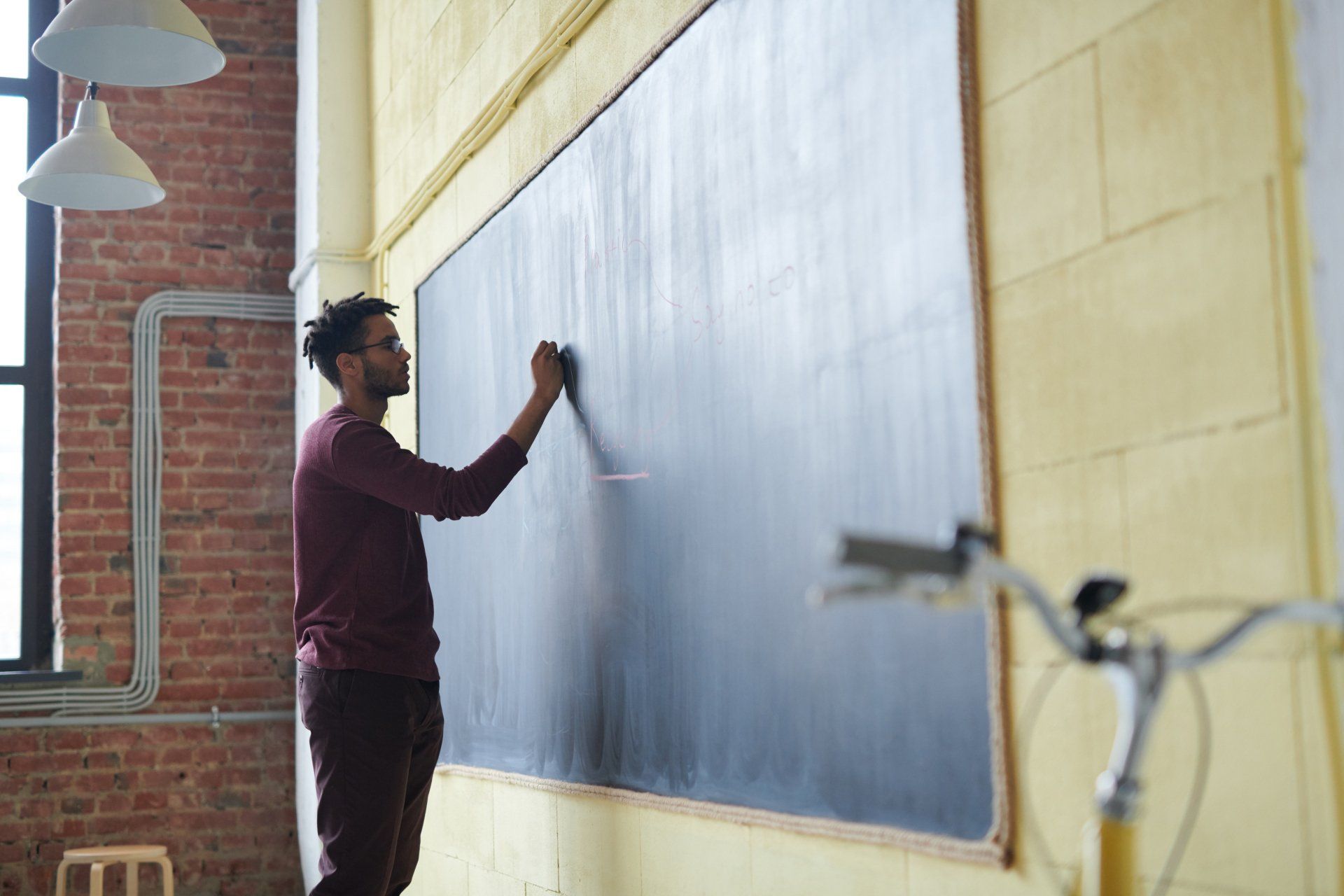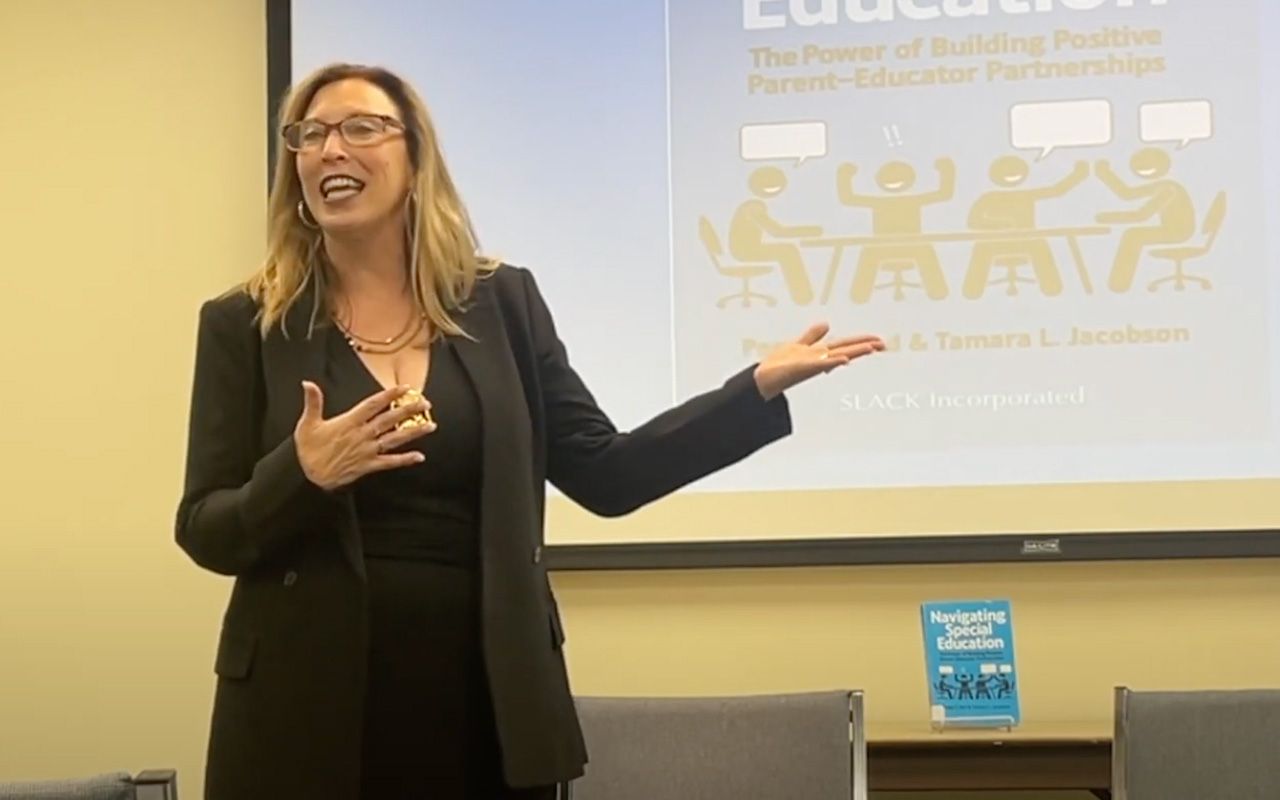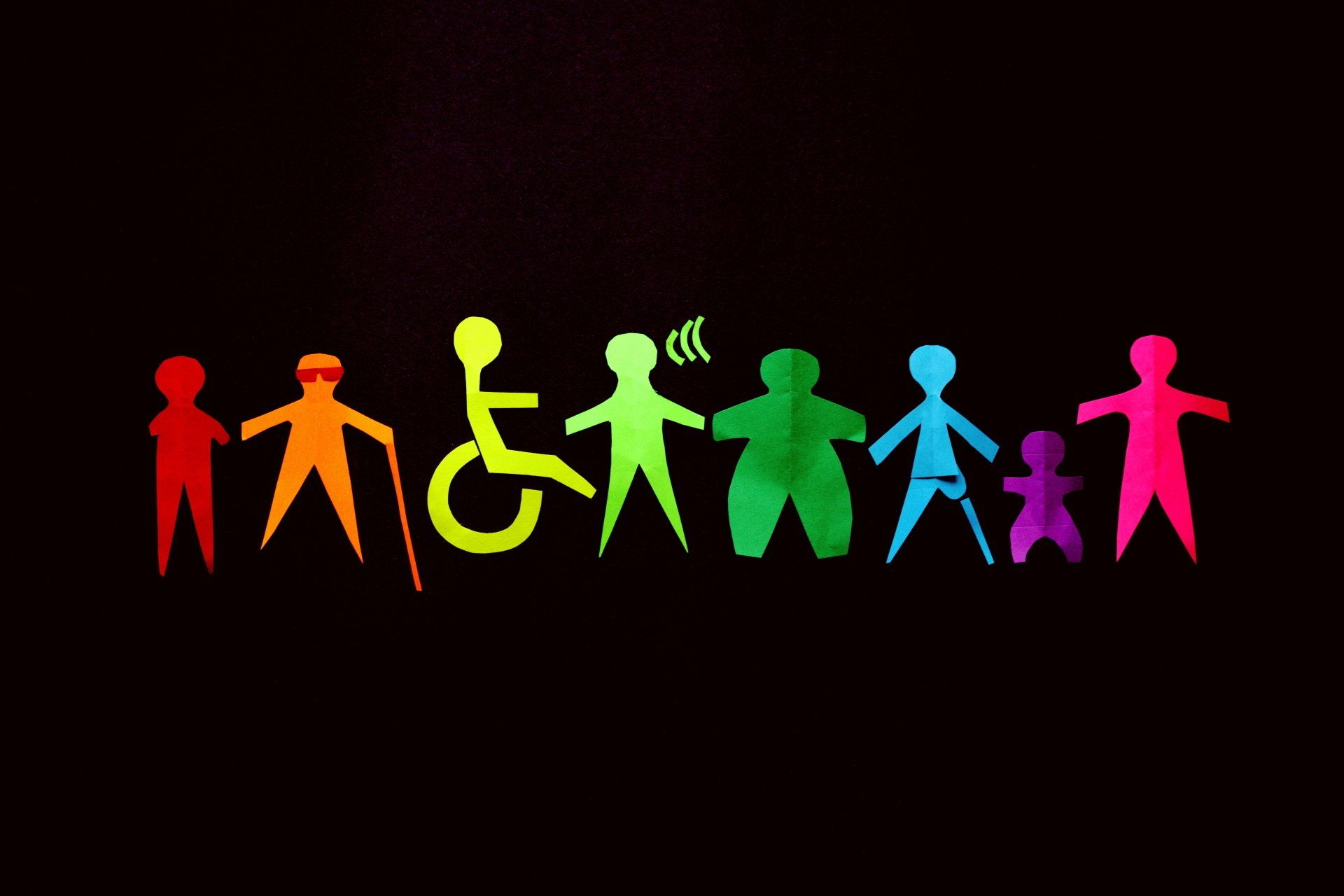The Power of Positive Parent-Educator Partnerships
The Power of Building Positive Parent-Educator Partnerships
Blog

By Peggy S. Bud & Tamara L. Jacobson
•
23 Mar, 2024
Grief is a powerful emotion and a profound and natural reaction to the loss of a loved one or something of significant importance. People share universal feelings; grief transcends cultural boundaries. Initially, the grieving process is exclusively attached to death; however, grief can be triggered by any significant loss, even the loss of one's dreams.

04 Oct, 2023
When teachers have a solid grasp of their students’ emotional status and learning style, they are better able to understand their successes and failures. These insights lead to more creative teaching and the incorporation of the use of multiple modalities in their lessons. When educators are familiar with the cultural background of all learners in their classroom, they are better able to include literature and educational activities to reflect these differences. Students are more successful when they are actively engaged in the learning process. This begins by asking open-ended critical-thinking questions during discussions. When teaching virtually, the use of visual aids such as pictures, videos, and PowerPoint presentations ensures all learning styles are considered. At different points within a lesson, checking for understanding provides the teacher with evidence that the students are learning. It also is an effective way to guide instruction, increase the learner’s engagement with the material, and vary content. How students learn is shaped by group participation, individual responsiveness, and the teacher’s ability to check for understanding through oral and written communication. Other Instructional activities analyze oral and silent reading and listening comprehension along with the student’s ability to visually attend. These best practices can help enhance the learning process. Research suggests traditional learning practices continue to be effective. These practices include lectures, daily and weekly check-in with students, homework, hand raising, answering textbook questions, and pre-and post-testing. Currently, non-traditional learning theories are also becoming more dominant in the classroom. These include Critical Race Theory, Critical Pedagogy, Critical Multicultural Education, Funds of Knowledge, Critical Cultural Capital, Non-Biased education. Adequate nutrition impacts student learning and memory retention. In impoverished districts can be of pressing concern for administrators and teachers, who must explore ways to respectfully offer free lunch, and sometimes breakfast, to students. Based on our professional experiences and observations, it appears that although there is less racism, problems related to gender, and social class continue to jeopardize students' learning and their overall well-being. Factors contributing to successful learning such as class size affect the student-teacher ratio and therefore impact a teacher’s ability to provide individualized instruction to students. To reduce student disengagement, choice is a crucial part of teaching and learning. This is important at all grade levels and particularly important for students learning a second language or neurodiverse learners. There are programs that provide students with diverse ways to engage in learning activities. These include cooperative learning, peer-to-peer editing, critical group analysis, readers workshop, Mathnasium, and behavioral and emotional counseling. Differentiation of instruction supports students who may otherwise struggle in the classroom. Using any of these models provides students with opportunities to gain from the experiences of their peers and teachers. Research has found that successful learners are open to learning. Our memory is linked to what and how teachers present information. This includes time of day, teaching methodology, learning reinforces, and types of drill and practice that follow initial instruction. If we want teaching and learning to be most effective, it is crucial that curriculums represent diverse learners and are culturally appropriate. This means incorporating visual, oral, and sensory learning techniques to enhance understanding. Everyone has a different learning style; we believe in multi-dimensional learning techniques. We understand how people learn new and innovative ideas varies and can create teaching challenges. Yet, best practices for motivating learners vary depending on the individual and their unique needs and learning style. Consequently, when teachers use creative strategies and culturally responsive methodologies, there is an increase in student motivation and success. Individual or group interactions tend to increase buy-in versus the use of a lecture format. Therefore, the key to successful teaching and learning should combine innovative learning strategies with highly motivating and rewarding practices. This technique is a winning combination.

29 Sep, 2023
Historically, parents did not play an integral role in their child’s education. Even though research showed family engagement significantly affected student outcomes, most teachers did not collaborate with parents. Instead, home-school communication tended to be monologues rather than dialogues. Teachers reported on the student's performance, and parents passively listened and asked very few questions. Regarding pre-COVID teaching and learning, if we took a step back and honestly reflected on what that looked like, we would all agree it had flaws. We know home-school communication is crucial for student success. However, parents were expected to be listeners, and to defer the teaching and learning responsibilities to the school. They were reluctant to ask too many questions or share personal information, fearing it might affect how the teacher treated their child. On the other hand, teachers and administrators did not focus on parental involvement because they saw themselves as being responsible for the education and activities of their students. Then, suddenly and without warning, teaching, and learning changed! Due to COVID-19, a stay-at-home order across the country moved teaching and learning from the classroom to virtual instruction. This put tremendous pressure on parents. They were now expected, and often required, to be involved in their child’s education. Teachers needed to prepare for virtual instruction, and so did parents. Learning online presented multiple problems for families, which became layered on top of the vast changes due to the pandemic. Parents of neurotypical students felt frustrated and floundered, although their children were often capable of independent and self-guided learning. Parents of neurodivergent learners were now burdened with the responsibilities of being parents, teachers, and employees. They knew their children could not independently negotiate virtual instruction and now needed to understand the teaching strategies used to educate their children. Who knows what crisis is just around the corner? Teachers and administrators must refrain from reverting to how teaching and learning occurred pre-COVID-19. Let our mistakes be lessons on how to improve teaching and learning by enhancing the home-school connection. Most parents would benefit from additional knowledge and support regarding their children’s educational program, placement, and services, including OT, PT, and speech. The time for change is now! Collaboration between home and school is crucial. Building parent-educator partnerships and relationships drives having open and honest lines of communication. The only way to ensure the next crisis will not put the same type of burdens on our students is to be proactive. Parental engagement is crucial to student success. However, it requires parents and educators to collaborate and communicate. Building home-school partnerships creates a path that enables students to adapt and adjust during a crisis. Building Parent-Educator Partnerships means: Educators need the knowledge and tools required to teach in the 21 st Century. Administrators need to provide leadership through ongoing professional development and mentoring. Parents are part of teaching and learning conversations. In 2023, education has slipped back into its old patterns. Educators and therapists work in silos, and greater parental involvement is still necessary. How can the “Path Forward” be different? Begin by improving home-school communication and building solid parent-educator partnerships. No one foresaw what happened overnight in March 2020. Yet, today, we know that this could happen again. Let’s ensure teachers are tech-savvy and understand how to teach across all platforms. Engage parents in the teaching and learning process so they know the strategies and accommodations their children need to be successful. Let’s not repeat our mistakes. Instead, we should try to turn our mistakes into lessons that shape the future of education.

12 Sep, 2023
Conversations have different purposes. They can be informational, personal, relational, or transactional. Effective conversations are dialogues grounded in active listening and open the possibility of compromise. What is a conversation? Conversations occur when two or more people share ideas. Effective conversations begin with sharing facts, such as who, what, when, and where, and then delve deeper by asking questions and building on what the other person is saying. This interchange occurs through active listening Without deep conversations, change is not possible! If you say you are listening but are not open to compromise, are you really listening? Can change occur? Top-down leaders often say they are listening but are unwilling to change their position. They may hear what is being said but are not open to compromise. They do not ask questions or ask for clarification and may not embrace the other person’s perspective. What is compromise? The definition of compromise is settling a dispute by each person agreeing to some concessions. This is one way to think of compromise. Another way is to listen and see the situation from the other person’s perspective. Hearing the evidence that is driving the conversation may lead to agreement. Think of this as a form of compromise. OR Through deep and meaningful conversations, meshing your ideas with the other person’s ideas is also a way to compromise. Together, you create something bigger, better, more creative. An idea or plan emerges that you never considered or thought possible. Are you willing to listen and compromise? If so, begin by having deep conversations, asking lots of questions, and actively listening!

12 Jul, 2023
"An hour of planning can save you 10 hours of doing. " - Dale Carnegie What, another meeting? Oh No! Anxiety and stress. I don’t want to go into a room with strangers and feel alone, knowing they are all colleagues. How can we change this situation? Have a Pre-meeting. What is it? The pre-meeting uses a small, intimate meeting format, which allows everyone’s voice to be heard and their ideas considered. It can be a powerful tool and becomes the first meeting in the IEP process. A Pre-IEP meeting between parents and a case manager or school administrator leads to more productive and shorter IEP meetings. Yet, they are viewed as an extra meeting and require parents to take time away from their jobs or other responsibilities. This is why educators and parents are resistant to having this extra meeting. We believe these meetings build trust, which is why we suggest having one or more pre-meetings between the administrator, or case manager, and parents before IEP meetings. This type of meeting can be a powerful tool and becomes the first meeting in the IEP process. Using a small intimate meeting format allows everyone’s voice to be heard. The pre-meeting concept is not found in education handbooks or government documents. Yet, it gives parents and educators a platform to clarify the purpose of the IEP meeting, share and discuss data, and review the procedures outlined by state and federal laws. It allows parents to ask questions and better understand the IEP process without feeling threatened or intimidated. The concept of having a Pre-IEP meeting may be rejected because everyone views it as just another meeting and does not understand its purpose. Trust emerges when casual meetings are held because everyone starts to hear one another’s perspective. The pre-meeting also leads to creative opportunities, such as creating a ‘cheat sheet. This is a one-pager filled with definitions and terminology that will be used at the IEP meeting. If you would like to learn more about the value of a PRE-MEETING and how to build a repertoire of techniques to help parents and educators effectively communicate with each other as partners, submit a request to speak with Peggy and Tamara.

21 May, 2023
BASKING RIDGE, NJ – Tamara L. Jacobson and Peggy S. Bud spoke about their timely book Navigation Special Education; The Power of Building Positive Parent-Educator Partnerships this month at Bernards Township Library in Basking Ridge, New Jersey . Parents, educators, and community members attended the program. Bud and Jacobson presented an overview of the 5-C Model of Communication, an original theoretical framework to help parents and educators effectively communicate. They also discussed active listening and the importance of data collection. They have many speaking engagements planned both in-person and virtually to promote their book, and they also offer consulting services to parents and school districts.
The Power of Building Positive
Parent-Educator Partnerships

Order the book



